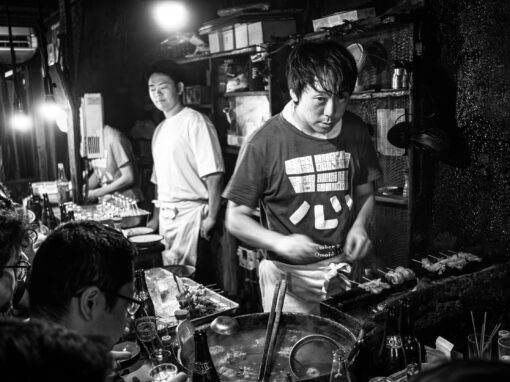Bristol Photo Festival
The world never stands still; it is always in the process of unfolding and becoming otherwise. Any given place is better understood as a momentary congregation of bodies, matters, histories, dreams, and ideas. For the next edition of the Bristol Photo Festival (starting tomorrow, October 16), its organizers focus on the theme of movement, drawing attention to both global currents and flows, as well as fleeting and ephemeral encounters. They ask what it means to both move and be moved by others, to understand movement, connection, and relationships as the primary condition of being.
The festival program is organized across four strands:
- Personal stories of global connection
- Social movements: on care, kinship, and solidarity
- To be moved by one another: on photography, affect, and feeling
- Traces left behind
We start with the notion that stories shape the world as it unfolds, creating the parameters of shared life. Consequently, it matters deeply what stories are told, who speaks, and ultimately, who is heard. We think of photography as a form of storytelling, with pictures becoming navigational tools and maps to think and reimagine the world. This is the starting point in how we have curated the Bristol Photo Festival.

© Kirsty Mackay
In these terms, photography is often assumed to be a method of uncovering meaning, making it visible, and offering legibility to an audience. Such an approach, however, often risks flattening subjects into universal narratives, obfuscating differences and complexity. Consequently, we are interested in photographic practices that hold a degree of opacity. This does not mean they are closed off, but rather that they refuse to be fully captured by a singular interpretation. They contain metaphor and allegory, space for both thinking and feeling, and the possibility of secrets yet to be revealed.

Courtesy of the artist and WMA. The Frank Fischbeck Collection.
Courtesy of The University of Hong Kong Libraries
Places are woven from threads that can be traced outwards to reveal entangled maps of global connection. Following the routes of food, energy production, or the material objects that surround oneself demonstrates the ways in which places can never truly be separated. Bristol – where we stand today – is built equally by East Asian factory workers and those who mine raw minerals in Central Africa, as it is from the labor of the communities close at hand. It is not only space that folds in on itself in this manner, but also time. The wealth of this city – upheld in its steadfast architecture – can be traced to the transatlantic slave trade and to the many communities torn apart by European colonization.
A question of ethics emerges: how might forms of solidarity – concrete commitments towards those with whom one’s life is entwined – be formed? This is not a new question within photography, however too often stories have been told on behalf of others, leaving little room for a plurality of voices. We aim to explore the first-hand stories of those whose lives are shaped by patterns of movement. This will include tales of routes and journeys, sites of crossing, and diasporic stories of community, kinship, and connection.

© Nigel Poor
The individual is a myth. To define the self too rigidly, a bounded body separate from the world around is to overlook the ways in which life can only occur in connection with others. We breathe, in and out, in exchange with the plants that surround us. We eat, often relying on the labor of others. All bodies are porous and communal, yet vulnerability is distributed unevenly.
To find strength, bodies congregate and support one another. This can be seen in moments of protest, acts that occupy space, making vulnerability visible while demanding better. It is also true in the communities we build, ties of kinship that offer care and solidarity.
Photography has often been torn between those who emphasize representation – the ability of the image to honestly record and hold on to events – and those who place weight on the role of feelings; the way in which images can affect the viewer, causing feelings to surface and drawing subjectivities into question. In practice, these two roles are rarely separate; photography is ultimately a collective endeavor that brings together the photographer, photographed, and spectator into a relationship where feelings arise.

© Ritual Inhabitual
In thinking alongside movement, we are interested in what is left behind. This can include material traces of the past, as well as the way in which events continue to resurface, remade anew through their relationship to the present. In these terms, the past is never settled. Photography acts as a point of gathering and contestation, around which dialogue of histories might occur. Photography calls on us to attend to the ghosts in our midst, to the ways in which our communities are shaped by the past, doing so graciously, with a sense of hospitality.
BRISTOL PHOTO FESTIVAL




